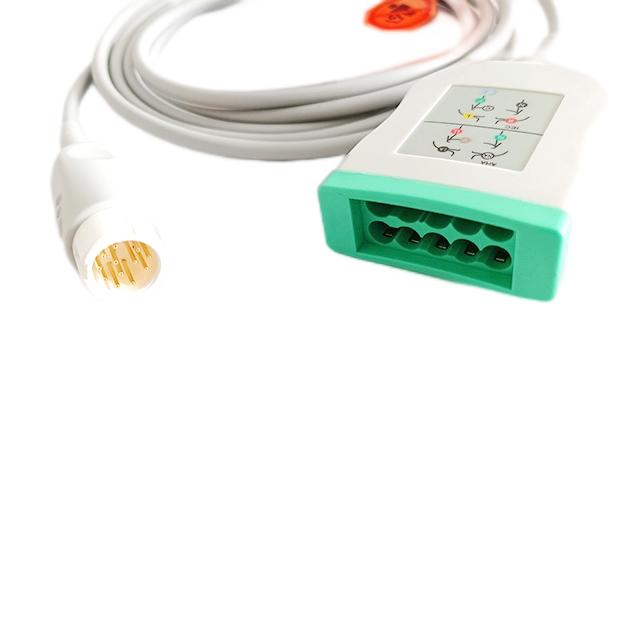
Analysis of the structure and principle of ECG cable
2024-03-21 00:04:44
Understanding the Intricacies of ECG Cable Technology

Electrocardiogram (ECG) cables play a crucial role in gathering accurate cardiac data for medical diagnosis and monitoring. In this article, we will delve into the structure and principle of ECG cables, discussing their various components and how they work together to transmit vital information.
1. Anatomy of an ECG Cable
An ECG cable consists of several key components that contribute to its functional design. These include:
- Lead Wires: These are the conductive paths that transfer electrical signals from the patient's body to the ECG machine. Lead wires have specific colors to differentiate between limb leads and chest leads.
- Electrodes: These are the sensors that attach to the patient's skin and detect the electrical signals generated by the heart. Electrodes can be either disposable or reusable, and they come in various shapes and sizes.
- Connectors: These are the interface points between the leads wires and the ECG machine. Connectors ensure secure attachment and proper transmission of signals, minimizing noise interference.
2. Working Principles of ECG Cables
ECG cables follow a specific working principle to accurately capture and transmit electrical signals. The process can be broken down into the following steps:
- Electrode Placement: The electrodes are strategically placed on predefined locations of the patient's body to capture the electrical activity of different regions of the heart.
- Signal Acquisition: When the heart beats, it generates electrical signals that are detected by the electrodes. These signals are converted into a series of voltage fluctuations.
- Signal Amplification: The voltage fluctuations are often weak, so the ECG cable amplifies the signals to ensure they are strong enough for proper detection and analysis. This amplification enhances signal quality and minimizes the impact of noise.
- Signal Transmission: The amplified signals are then transmitted through the lead wires to the ECG machine. This transmission is designed to maintain signal integrity, minimizing data loss or distortion.
3. Advancements in ECG Cable Technology
The continuous advancement of ECG cable technology has brought about several notable improvements:
- Noise Reduction: Modern ECG cables incorporate innovative techniques and materials to minimize noise interference, ensuring accurate data acquisition.
- Flexibility and Durability: ECG cables are now designed to withstand repeated use and bending without compromising signal quality. They are often made from flexible and durable materials such as silicone.
- Wireless Transmission: Some ECG cables now support wireless transmission of signals, eliminating the need for physical connection to the machine. This enhances patient comfort and mobility.
In conclusion, ECG cables are intricate devices that play a crucial role in the accurate measurement and analysis of cardiac electrical activity. Understanding the structure and principle of ECG cables helps medical professionals utilize this technology effectively for better patient care.
Get the latest price? We'll respond as soon as possible(within 12 hours)




